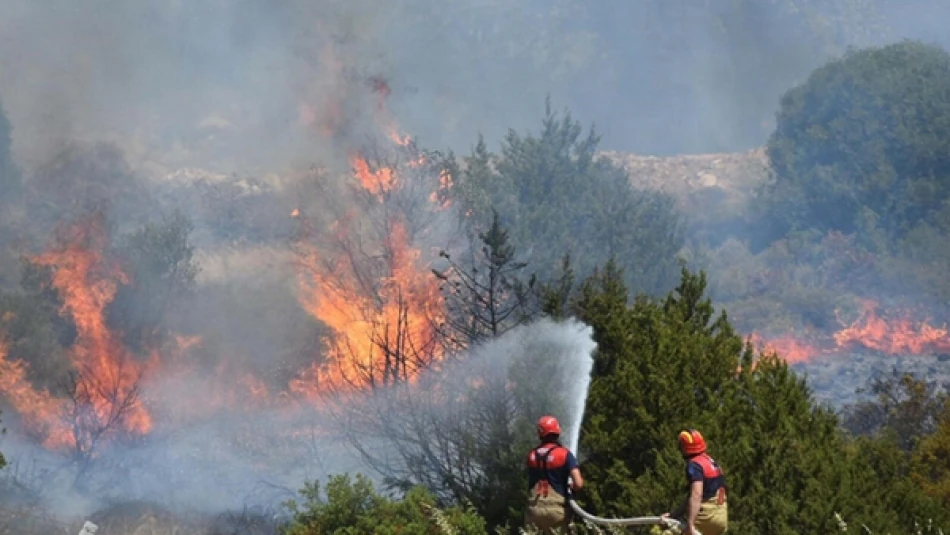
Devastating Forest Fire in Central Turkey Leaves Casualties
Turkey's Deadliest Wildfire Tragedy Claims 10 Firefighters as Climate Crisis Intensifies Mediterranean Blazes
A sudden wind shift turned a forest fire into a death trap for Turkish firefighters in Eskişehir province, killing 10 and injuring 14 others in what marks one of Turkey's most devastating wildfire incidents. The tragedy underscores the growing dangers faced by emergency responders as Mediterranean countries grapple with increasingly severe fire seasons driven by climate change and extreme weather patterns.
Fatal Wind Shift Traps Emergency Crews
Turkish Agriculture and Forestry Minister Ibrahim Yumaklı confirmed that 24 firefighters became trapped when winds suddenly changed direction in the Seyitgazi area of Eskişehir province, located in central Turkey. The abrupt shift sent flames directly toward the crew, who were immediately rushed to hospitals following the incident.
"The wind changed direction suddenly and threw flames toward them," Yumaklı told reporters, highlighting the unpredictable nature of wildfire behavior that has become increasingly common across the Mediterranean basin.
Broader Fire Crisis Across Central and Western Turkey
The Eskişehir tragedy is part of a larger wildfire outbreak affecting Turkey, with seven active forest fires burning across five provinces in the country's central and western regions. This multi-front fire emergency reflects the challenging conditions that have made Turkey particularly vulnerable to severe wildfire seasons in recent years.
Pattern of Escalating Fire Seasons
Turkey has experienced increasingly destructive wildfire seasons, particularly since 2021 when massive blazes devastated coastal resort areas and forced thousands to evacuate. The country's position between European and Asian weather systems, combined with rising temperatures and changing precipitation patterns, has created ideal conditions for large-scale fires.
Mediterranean Fire Crisis in Global Context
Turkey's current wildfire emergency mirrors similar challenges faced across the Mediterranean region. Greece, Spain, Portugal, and southern France have all experienced devastating fire seasons in recent years, with emergency responders facing similar risks from unpredictable fire behavior.
The death of firefighters in active duty has become a tragic recurring theme across fire-prone regions. California's deadliest wildfire incidents have similarly claimed the lives of emergency responders, while Australia's 2019-2020 fire season resulted in multiple firefighter fatalities, highlighting the global nature of this crisis.
Economic and Strategic Implications
For Turkey's economy, recurring wildfire crises pose significant challenges beyond immediate emergency response costs. The country's tourism industry, agriculture sector, and forest resources face mounting pressure from increasingly severe fire seasons. Insurance markets are already adjusting risk assessments for Mediterranean properties, with Turkey likely to see similar impacts on coverage availability and pricing.
Infrastructure and Preparedness Investments
The tragedy will likely accelerate discussions about Turkey's wildfire preparedness infrastructure. Countries like Portugal have invested heavily in early warning systems and specialized firefighting equipment following their own devastating fire experiences, while Israel has developed advanced aerial firefighting capabilities that other Mediterranean nations are beginning to adopt.
Turkey's strategic position and NATO membership also mean that international cooperation on firefighting resources could expand, particularly as European Union countries increasingly share aerial firefighting assets during peak fire seasons.
Climate Reality Reshaping Emergency Response
The Eskişehir incident demonstrates how climate change is fundamentally altering the risk profile for emergency responders. Traditional firefighting tactics developed for predictable fire behavior are proving insufficient against blazes that can change direction and intensity with little warning.
This evolution demands not only better equipment and training but also new approaches to when and how firefighters engage with active blazes. The human cost of maintaining current response strategies may force difficult conversations about evacuation-focused approaches versus direct fire suppression in the most dangerous conditions.
Most Viewed News

 Layla Al Mansoori
Layla Al Mansoori






